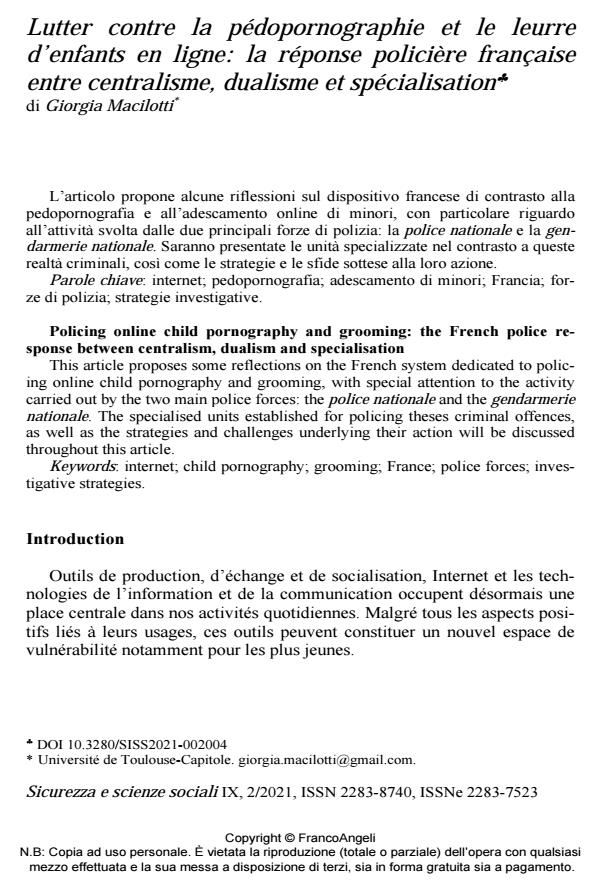Policing online child pornography and grooming: the French police response between centralism, dualism and specialisation
Journal title SICUREZZA E SCIENZE SOCIALI
Author/s Giorgia Macilotti
Publishing Year 2021 Issue 2021/2
Language Italian Pages 16 P. 55-70 File size 194 KB
DOI 10.3280/SISS2021-002004
DOI is like a bar code for intellectual property: to have more infomation
click here
Below, you can see the article first page
If you want to buy this article in PDF format, you can do it, following the instructions to buy download credits

FrancoAngeli is member of Publishers International Linking Association, Inc (PILA), a not-for-profit association which run the CrossRef service enabling links to and from online scholarly content.
This article proposes some reflections on the French system dedicated to polic-ing online child pornography and grooming, with special attention to the activity carried out by the two main police forces: the police nationale and the gendarme-rie nationale. The specialised units established for policing theses criminal offenc-es, as well as the strategies and challenges underlying their action will be discussed throughout this article.
Keywords: internet; child pornography; grooming; France; police forces; inves-tigative strategies.
Giorgia Macilotti, Lutter contre la pédopornographie et le leurre d’enfants en ligne: la réponse policière française entre centralisme, dualisme et spécialisation in "SICUREZZA E SCIENZE SOCIALI" 2/2021, pp 55-70, DOI: 10.3280/SISS2021-002004